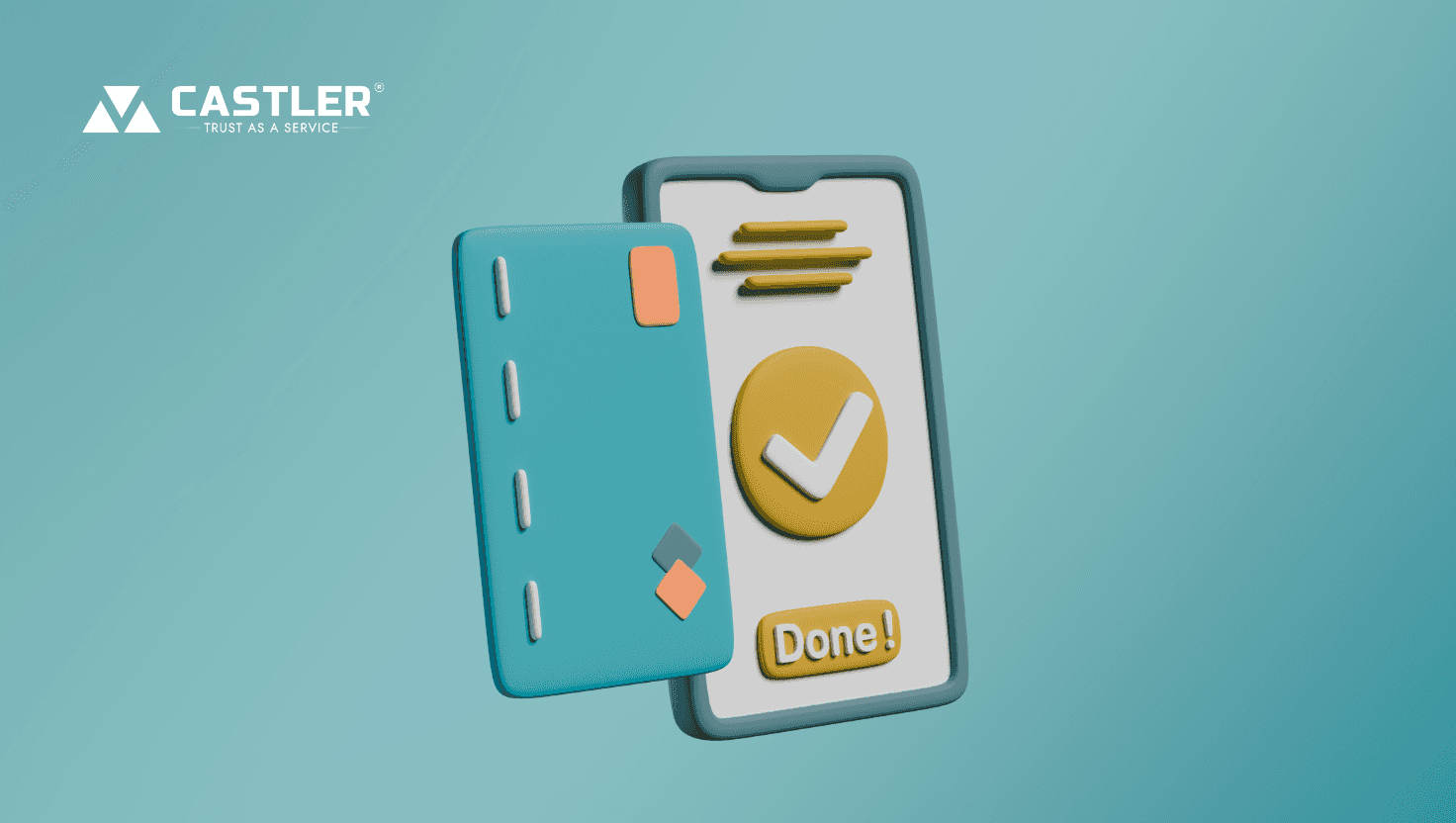Connected Banking
|
November 27, 2025
-
6 MINS READ

In today's fast-paced financial environment, businesses often manage multiple bank accounts, payment methods, and accounting systems. Handling different banking processes can waste time, create errors, and obscure cash-flow visibility. This is where integrated banking solutions are beneficial. By consolidating accounts, payments, reconciliations, and financial workflows into one digital platform, integrated banking allows modern businesses to function with clarity, speed, and control.
With this type of solution, finance teams no longer have to log into various bank portals, download statements manually, or reconcile transactions with spreadsheets. Instead, they can access real-time balances, automated payment workflows, and consolidated reconciliations. This gives them the freedom to focus on strategic growth rather than routine banking tasks. In this blog, we will explore what integrated banking means, why it's becoming increasingly important for businesses, how it works, and its essential role in today's finance-driven landscape.
What Is Integrated Banking?
Integrated banking is a unified banking framework that connects a company’s various bank accounts, payment channels, and financial workflows through a single digital platform. Instead of treating each banking relationship, payment type, or account separately, integrated banking consolidates all financial operations, enabling seamless interaction, real-time data flow, and centralized control. This integration often uses secure APIs, standardized payment and transaction formats, and consolidated dashboards, providing finance teams with a complete overview of their financial status.
In essence, integrated banking removes the fragmentation of old banking systems, giving companies a cohesive, efficient, and future-ready financial structure.
Why Integrated Banking Is Critical for Modern Businesses
Growing Complexity of Corporate Finances
Today’s businesses whether small and medium-sized enterprises (SMEs), large corporations, or fintech ventures often maintain multiple bank accounts across different banks and manage vendor payouts, customer payments, payroll, and frequent reconciliations. Tracking all of this manually or across various systems leads to operational inefficiencies, increases the risk of errors, and often results in delays or cash-flow mismanagement.
As regulations become stricter, digital payment volumes rise, and financial management becomes more strategic, companies need a banking system that can keep up. Integrated banking offers that speed and reliability.
Need for Real-Time Financial Visibility and Control
In a world where the timing of cash flow matters for payroll, vendor payments, working capital, and investments companies must know their real-time liquidity position. Integrated banking provides a “single source of truth” across all accounts and transactions. This visibility enables CFOs and finance teams to make informed decisions about when to pay vendors, scale operations, adjust settlements, or invest surplus liquidity.
Efficiency and Automation to Reduce Manual Work
Manual banking tasks logging into portals, downloading statements, reconciling invoices, and verifying receipts are time-consuming and prone to mistakes. Integrated banking systems automate many of these processes. Transaction data flows easily from banks to ERP or accounting platforms, reconciliations occur automatically, and workflows for vendor payments, salaries, or refunds can be triggered through simple interfaces. This saves time and cuts operational costs, letting teams concentrate on strategy rather than routine tasks.
Compliance, Security, and Audit-Ready Banking
In regulated settings especially for fintechs, non-banking financial companies (NBFCs), or enterprises managing large transactions compliance, audit trails, and secure transactions are essential. Integrated banking platforms incorporate security measures, multi-factor authentication, encrypted APIs, and audit-ready logs. This lowers the risk of fraud, ensures compliance with regulations, and supports smooth audits when needed.
Scalability and Flexibility for Growing Businesses
As companies grow across regions, products, or revenue volumes their banking needs become more complicated. Integrated banking solutions are designed to scale, allowing businesses to add new bank accounts, create multi-entity workflows, support bulk payments, and manage multiple currencies or payment methods without overhauling their infrastructure. This adaptability ensures they remain ready for the future.
Key Features of Integrated Banking Solutions
To understand how integrated banking provides these benefits, let’s look at its main features and functionalities.
Unified Multi-Bank Dashboard
An integrated banking platform typically offers a central dashboard that brings together data from all linked bank accounts. Finance teams can view real-time balances, pending payments, cleared transactions, and cash flow positions across banks and branches without needing to log into different portals. This unified view simplifies oversight and strategic planning.
Automated Payment Initiation and Bulk Disbursements
Whether for salaries, vendor invoices, refunds, or partner payouts, integrated banking allows for batch or scheduled payments. Payment initiation flows through APIs or payment engines help automate these processes, saving time and lowering the chance of human error. Many platforms support NEFT, RTGS, UPI, bulk transfer formats, and more, addressing diverse payment needs from one source.
Real-Time Reconciliation and Settlement Tracking
Integrated banking systems automatically sync bank statement data, match transactions with invoices or ledger entries, and highlight discrepancies or pending items. This real-time reconciliation helps businesses close their books faster, avoid delays, and maintain clearer financial records.
Role-Based Access, Compliance, and Audit Trails
For companies with multiple stakeholders finance teams, administrators, auditors integrated banking solutions provide role-based permissions, approval workflows, and audit logs. Every transaction, payment approval, disbursement, or balance check is recorded and timestamped, promoting accountability and regulatory compliance.
Seamless Integration with ERP, Accounting, and Financial Tools
A strong integrated banking solution connects through APIs to ERP systems, accounting software, and other financial tools. This eliminates manual data entry, reduces errors, and provides a synchronized view of banking and accounting data, allowing for more accurate forecasting, cash flow planning, and financial reporting.
Scalability for Multi-Entity, Multi-Bank, Multi-Currency Needs
As businesses expand, they may operate in different regions, maintain various bank relationships, or handle multiple currencies. Integrated banking platforms are built for scalability managing increased transaction volumes, complex compliance needs, and diverse use cases without loss of performance.
How Integrated Banking Works: Technology and Workflow
Understanding the mechanics behind integrated banking clarifies how raw banking data translates into strategic insights.
API-Powered Connectivity
At its core, integrated banking relies on bank integration APIs secure links through which banking systems communicate with enterprise platforms. These APIs enable real-time balance retrieval, transaction history access, payment initiation, and statement generation. Modern banking integration emphasizes strong security, encrypted data exchange, and compliance with regulatory standards.
Backend Data Aggregation and Synchronization
Once connected, all account data is sent to a centralized backend, including deposits, withdrawals, transfers, and statement entries. This data is stored, normalized, and synchronized in near real-time. The unified backend serves as the single source of truth, powering dashboards, analytics, reconciliations, and reporting.
Workflow Engine and Rule-Based Automations
With integrated banking, finance teams can establish business rules, such as triggering payroll on the first working day, releasing vendor payments after invoice approval, or scheduling recurring vendor payouts. The internal workflow engine manages these rules, automates execution, and logs every action for audit compliance.
User Interface and Dashboard Layer
A well-designed integrated banking solution wraps all functionalities in a user-friendly interface, giving CFOs, finance teams, accountants, and administrators easy access to account overviews, transaction lists, payment scheduling, reconciliation tools, and exportable reports.
Security, Compliance, and Audit Mechanisms
Beyond encryption and secure APIs, integrated banking platforms have compliance modules, including role-based access controls, user authentication, fraud detection, audit logs, and regulatory compliance workflows. This comprehensive safety framework ensures secure, traceable banking operations.
Who Benefits Most from Integrated Banking?
Integrated banking is especially valuable for:
SMBs and Mid-Market Enterprises that manage multiple bank accounts and need automation for payments, payroll, vendor payouts, and cash flow management.
Large Corporates and Multinationals with complex banking operations, multi-entity accounting, and cash flow across regions, requiring consolidated dashboards and real-time liquidity visibility.
Fintechs and NBFCs that need API-driven banking infrastructure for payment processing, collections, disbursements, and regulatory compliance.
Marketplaces and Platforms that handle multiple payouts vendors, partners, commissions requiring scheduled payments, bulk transfers, and reconciliations.
Enterprises with High Transaction Volumes where manual reconciliation would be error-prone and slow, integrated banking enhances efficiency and accuracy.
As banking becomes more integrated into enterprise operations, the need for integrated banking shifts from optional to essential.
Challenges and Considerations When Implementing Integrated Banking
While integrated banking presents many advantages, businesses should consider several factors:
Reliable Bank Integration and API Compatibility
Not all banks support strong integration APIs, and the APIs may vary in features. Selecting a solution provider that supports many banks and ensures dependable API connectivity is essential.
Data Security and Regulatory Compliance
Managing banking data requires strict security measures, encryption, adherence to local data protection laws, audit logging, and access controls. Choosing a platform that includes these safeguards is crucial.
Change Management and Process Alignment
Moving from manual workflows to integrated banking requires change management. This involves training finance teams, migrating historical data, adjusting standard operating procedures, and aligning internal processes.
Cost vs. Benefit Analysis
Some integrated banking solutions involve subscription or transaction fees. Businesses need to determine if the efficiency gains, cost savings, and operational benefits justify the implementation costs.
Customization and Scalability
As companies grow, their banking needs may change. The selected integrated banking solution must be flexible enough to adapt, support multi-entity operations, and integrate with evolving accounting or ERP systems.
The Growing Importance of Integrated Banking Post-COVID and in a Digital-First Economy
The COVID-19 pandemic sped up digitization across all sectors. Remote work, distributed teams, e-commerce growth, and digital customer interactions made manual banking management impractical and risky. Many organizations turned to digital banking platforms that combine payments, disbursements, reconciliations, and visibility within one interface.
Beyond the pandemic, regulations, automation, and business complexity continue to rise. As companies expand internationally, engage in multi-currency operations, or incorporate fintech services, integrated banking becomes a foundational element.
Moreover, API banking, open banking initiatives, and fintech-bank partnerships have accelerated enabling businesses to build modular, flexible banking capabilities directly integrated into their systems, connecting banking with business logic, workflows, and automation.
Integrated banking is no longer an experimental technology; it’s a strategic necessity for companies seeking agility, control, and growth.
How Castler’s Integrated Banking Solutions Enable Businesses
Castler provides integrated banking solutions tailored for modern businesses and financial institutions. Our platform consolidates bank account management, payment orchestration, reconciliations, compliance, and real-time visibility, offering enterprises a single source of truth for all their banking operations.
With Castler’s integrated banking suite, clients benefit from secure API-based connections to multiple banks, real-time synchronization of balances and transactions, automated payment workflows, bulk disbursements, consolidated dashboards, role-based access and compliance controls, and seamless integration with enterprise ERP or accounting systems.
Whether you are an SME, a large corporation, a marketplace managing payouts, or a fintech handling multiple banks, Castler’s integrated banking framework simplifies operations, reduces manual tasks, and provides a scalable, compliant banking foundation for your business.
Conclusion
In an era where speed, scale, and accuracy determine business success, integrated banking has become a key component of modern financial infrastructure. By consolidating bank accounts, payments, reconciliations, and reporting into a single digital platform, integrated banking provides real-time visibility, operational efficiency, reduced risk, and flexible scalability that traditional banking processes cannot match.
Businesses of all sizes SMEs, enterprises, fintechs, marketplaces stand to gain by adopting integrated banking. Whether managing vendor payouts, payroll, cash flow, multi-bank reconciliations, or compliance tasks, a unified banking infrastructure transforms financial operations from fragmented chores into strategic enablers.
Castler’s integrated banking solutions combine effective technology, compliance, and practicality giving companies a robust, scalable, and secure banking structure that fosters growth, agility, and financial control.
If your organization is ready to enhance its banking infrastructure and streamline operations, explore how Castler’s integrated banking platform can make your finance operations more efficient, agile, and ready for the future.
Written By

Chhalak Pathak
Marketing Manager




